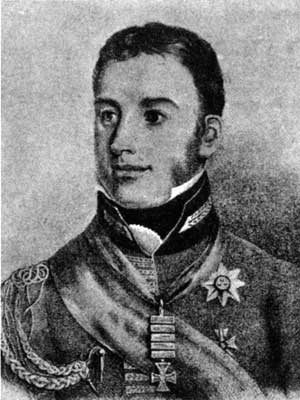|
CHALMETTE National Historical Park |
 |

Portrait of Sir Edward Michael Pakenham, after a lithograph of an
original painting in England.
British Plans and Preparations
In September, 1814, the British Secretary of War, Lord Bathurst, sent orders to Maj. Gen. Robert Ross, commander of His Majesty's Army in the Chesapeake Campaign, to prepare an attack on the Gulf Coast. Bathurst believed that, with help from the inhabitants, it would be easy to take New Orleans and make serious trouble for the United States in nearby territory. He was sending 2,150 rank and file as reinforcements, thus making sure of the success of this expedition, to which His Majesty's Government attached great importance. West Indies troops would join the force when it reached the rendezvous in Jamaica. Friendly Indians in the Southern United States would also be armed and equipped.
The expedition would first secure the mouth of the Mississippi, thus depriving inland Americans of access to the sea. It would secondly occupy a place important enough to increase British bargaining power in the peace negotiations. The details of the plan were left to General Ross and Adm. Sir Alexander Cochrane, commander of the British fleet. Bathurst felt that the people of Louisiana wanted to become independent or to return to Spanish rule, thus making it unnecessary to maintain a large British occupation force there. To keep the white population on the British side, no encouragement was to be given to a slave revolt.
The easy capture of Washington encouraged the British to proceed with the Gulf Coast phase of their offensive. Before General Ross received his instructions for the campaign on the Gulf Coast, however he was killed in the unsuccessful attack on Baltimore. Maj. Gen. Sir Edward M. Pakenham was chosen to take his place. With Maj. Gen. Samuel Gibbs, he was sent on a fast frigate to America.
The choice of commander shows the importance the British attached to this invasion. Sir Edward Michael Pakenham was the brother-in-law of the Duke of Wellington, but he did not owe his prominence to that connection alone. Known as the "Hero of Salamanca," he had literally fought his way up. There was a coincidental connection between Sir Edward and his final opponent: Pakenham and the parents of Andrew Jackson were all born not far apart in County Antrim, Ireland.
In 1814, General Pakenham was 36 years old and in vigorous health—his opponent was 47 and in poor health. Pakenham had learned the art of war by fighting against the best armies in the world—Jackson had fought only savages. Pakenham had under him veterans of the wars against Napoleon—Jackson had mainly recruits and militia. It seemed there could be only one outcome of a contest between these two.

|
|
Last Modified: Mon, Dec 2 2002 10:00:00 am PDT |


